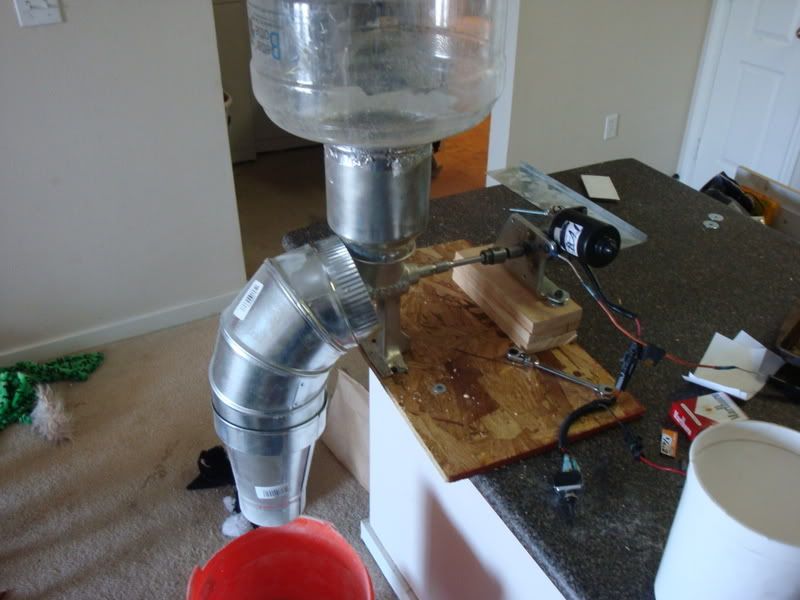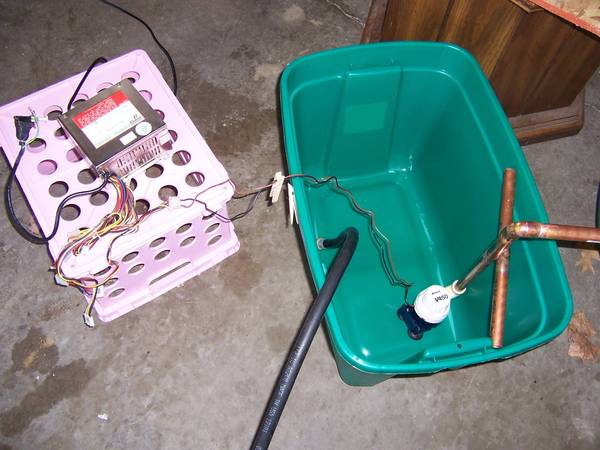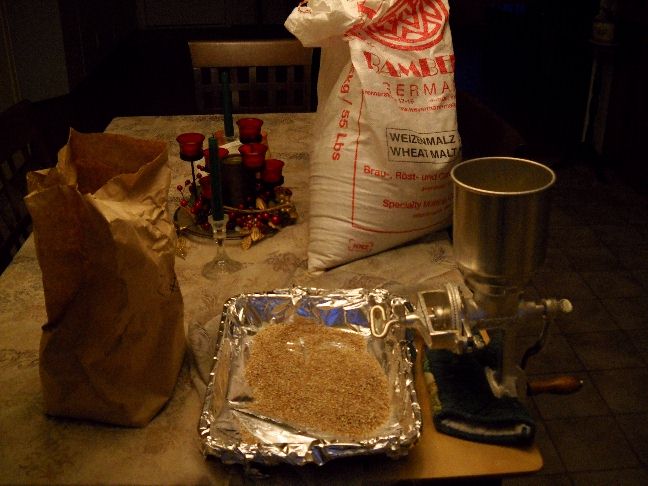Well, after reading this thread, and looking at my milling station:
I must say I was inspired, and got to work! I don't know if it qualifies as 'ugly' nevertheless it was a fun project with EXCELLENT rewards!

Thanks revvy, biermuncher and everyone else who contributed to this thread.
My dustfree, Corona in a bucket!
I used the Homer bucket, and just jigsawed off the bottom. I didn't want the weight of the mill bearing down on the handle, so I cut 2" off the thick section of shims, and they slid right into the notches on the rim of the Homer bucket, and give good separation. Not sure how much grain it will hold, but it's ENOUGH.
Well, at least I thought it was, but the stock hopper wasn't enough, so I upgraded it!!!
I used some 6" pipe to make a windshield for my burner, and with the leftovers I made the Megahopper! I just pour and crank now! :rockin: And yes that is Duct tape, on actual duct - who knew, right?! Working with sheet metal REALLY sucks, and the cut edges REALLY want to tear up your skin. The top ring of tape is keep my hands from shredding whenever I pour grain.

























![Craft A Brew - Safale S-04 Dry Yeast - Fermentis - English Ale Dry Yeast - For English and American Ales and Hard Apple Ciders - Ingredients for Home Brewing - Beer Making Supplies - [1 Pack]](https://m.media-amazon.com/images/I/41fVGNh6JfL._SL500_.jpg)













































